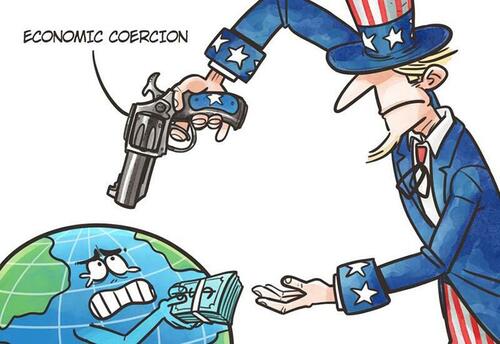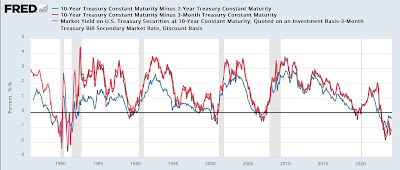INDIANAPOLIS — With a nearly $5.1 million grant, U.S. Department of Veterans Affairs (VA) Quality Enhance Research Initiative (QUERI), VA, Regenstrief Institute and Indiana University research scientists are working to implement and expand telehealth services within the VA.
Funding for the Expanding Expertise Through E-health Network Development (EXTEND) QUERI will enable and evaluate the adoption of three robust, evidence-based programs through multiple models of telehealth.
Telehealth is the use of electronic information and telecommunication technologies to support both local and long distance clinical healthcare, education and administration. This could include video conferences, streaming videos or audio, phone calls, digital education materials and much more.
“The VA has been heavily investing and innovating the design and delivery of telehealth services over the past decade,” said Teresa Damush, PhD, research career scientist at the VA, research scientist at Regenstrief Institute and co-leader of the EXTEND QUERI. “Our primary goal is to collaborate with our clinical stakeholders and utilize implementation strategies to facilitate the uptake and sustainment of telehealth services within three targeted contexts of VHA specialty care services to increase veteran access to high quality, evidence-based programs. Second, we plan to evaluate best practices for optimal communications and shared care between telehealth, primary and specialty care services and veteran patients.” Dr. Damush is also a senior research professor of medicine at Indiana University School of Medicine.
“The COVID-19 pandemic has led to a greater utilization of telehealth by providers in many health systems. The VA has paved the way for clinical providers to practice across state lines to increase patient access to specialty care services like the national, virtual acute TeleStroke services for rural emergency departments,” said Linda Williams, M.D., EXTEND QUERI co-leader, VA core investigator, Regenstrief research scientist and IU School of Medicine neurology professor. “We hope to build on that momentum, implementing programs that will maximize the potential of telehealth and allow the VA to provide more accessible care to more veterans.”
The EXTEND QUERI will test various models of telehealth care within Indiana, across wider VA regions and nationally. Areas of focus are:
- TeleNeurology — providing outpatient neurology consultations via telehealth for veterans at facilities with limited access to neurology care. The VA Video Connect system will connect neurologists directly to patients in their homes, at community-based clinics where the patient receives care, or to primary care providers for electronic consultation.
- TelePain — providing chronic pain management via primary care telehealth. Regional telebhubs staffed by specialty nurses will work with primary care providers to deliver pain management to veterans.
- TeleGRACE (Geriatric Resources for Assessment and Care of Elders) — extending the reach of geriatrics’ home and community-based care management via telehealth. Clinical staff will conduct virtual home visits and transmit patient evaluations to the centralized geriatrician and nurse practitioner located at the VA Medical Center to provide collaborative care management.
Research scientists are working in collaboration with VA operational partners including the VHA Offices of Telehealth; Rural Health; and Specialty Care Services – geriatrics, neurology, pain; and primary care services. The EXTEND QUERI Center will compare these models of telehealth care delivery to other telehealth and community-based care strategies, conduct a rigorous implementation and business case evaluation, and deploy implementation strategies to locally adapt and sustain these telehealth models.
“These projects were identified by drawing upon our partners’ shared agendas,” said Dawn Bravata, M.D., another co-leader of the project. Dr. Bravata is also a Regenstrief research scientist, VA core investigator and a professor of clinical medicine at IU School of Medicine. “We are excited to implement these evidence-based interventions in routine clinical care settings and hope to learn how to optimize them for the benefit of veterans and the providers who serve them.”
The EXTEND QUERI Center includes a rapid response core that will work with operational partners to support real-time, evidence-based decision-making as a learning health system in addition to the three planned projects. A mentoring core will train a new cohort of implementation scientists to investigate telehealth care systems to improve the quality and outcomes of care.
This project is funded by VHA HSR&D QUERI Program I50 HX003205-01 from Oct. 1, 2020 to Sept. 30, 2025. EXTEND is one of 10 QUERI centers funded in this round by VHA.
More about the areas of focus
TeleNeurology
The team of research scientists will conduct a clustered randomized trial to evaluate the effectiveness of two teleneurology programs for outpatient post-stroke/transient ischemic attack consultations. One program is the standard consultation, where a specialist uses video technology to provide an evaluation and medical advice remotely. In the other program, called “Teleneurology to Local,” local primary care providers are trained to provide the initial patient consultations with specialty e-consultation backup. The aim is to compare performance on stroke care quality metrics, patient and provider satisfaction, and costs of care.
TelePain
The TelePain project will focus on implementing collaborative care to help veterans manage chronic pain via primary care telehealth. These programs have been successful at reducing pain intensity and severity in a number of VA-funded studies, many led by VA and Regenstrief research scientists Kurt Kroenke, M.D., and Matthew Bair, M.D.
“We are building from these models to implement them nationally into the recently formed VHA telehealth hubs,” said Alan McGuire, PhD, VA research scientist and leader of the TelePain project. “Chronic pain is a serious problem faced by many veterans. We hope the TelePain program makes pain treatment accessible to a greater number of patients served by the VA.” Dr. McGuire is also an associate research professor at IUPUI.
The research scientists will test a high vs. low intensity implementation strategy bundle to determine implementation and effectiveness outcomes. Dr. Kroenke will serve as a consultant, and Dr. Bair will provide translational guidance.
TeleGRACE
The third component of EXTEND QUERI involves assessing the implementation of telehealth to extend the reach of the GRACE program, or Geriatric Resources for Assessment and Care of Elders. The program is a multidisciplinary care model where geriatricians, social workers, nurses and primary care providers deliver home-based geriatric care management. The goal is to use technology to make GRACE available to veterans who live far away from a VA facility.
Research scientists leading EXTEND QUERI
Dr. Bravata is a co-leader of EXTEND and the leader of the TeleGRACE project, working with the VA Chief of Geriatrics, Cathy Schubert, M.D. Dr. Bravata will also co-lead the mentoring core. She is a research scientist at Regenstrief Institute and a professor of clinical medicine at IU School of Medicine. She also serves as a core investigator for the U.S. Department of Veteran Affairs Health Services Research and Development (VA HSR&D) Center for Health Information and Communication (CHIC), Roudebush VA Medical Center.
Dr. Damush is the corresponding EXTEND QUERI leader and will oversee the implementation arms of all three programs. She is also a co-leader of the mentoring core. In addition to her role as a research scientist at Regenstrief, she is a senior research professor of medicine at Indiana University School of Medicine. She also serves as a research career scientist at the VA HSR&D CHIC.
Dr. McGuire is a core investigator for VA HSR&D CHIC, a clinical psychologist on staff at the VA, an associate professor in the Department of Psychology at the Purdue School of Science at IUPUI, and a clinical research scientist for the ACT Center of Indiana. In addition to leading the TelePain project, he will work on the rapid response core.
Dr. Linda Williams first created and directed the QUERI Center in Indianapolis back in 2004. In addition to her role as a research scientist at Regenstrief, EXTEND QUERI co-leader Dr. Williams is a core investigator for VA HSR&D CHIC, and a clinical neurologist and director of the Joint Commission Primary Stroke Center at the Roudebush VA Medical Center. She also is a professor of neurology at IU School of Medicine.
Laura Myers, PhD, from VA HSR&D CHIC, will lead the data core for QUERI Extend, enabling auditing and feedback on implementation strategies
###
Other Regenstrief researchers involved in this project include Johanne Eliacin, PhD; David Haggstrom, M.D.; Marianne Matthias, PhD; Edward Miech, EdD; Nicholas Rattray, PhD; and Angela Rollins, PhD. The team will be joined by JoAnn Daggy, PhD, and Tony Perkins, M.S. from Indiana University; Lauren Penney, PhD, of San Antonio VAMC and the University of Texas, San Antonio; and John Ney, M.D. from University and Bedford VAMC. Jennifer Myers from the VA HSR&D CHIC is the project administrator.
This project is funded by Veterans Health Administration HSR&D QUERI Program I50 HX003205-01 from Oct. 1, 2020 to Sept. 30, 2025. EXTEND is one of ten QUERI Centers funded in this round by VHA.
About the VA Health Services Research and Development Center for Health Information and Communication
The Health Services Research and Development (HSR&D) Center for Health Information and Communication (CHIC) group is a diverse cadre of researchers joining together to transform the healthcare system, both within and outside the VA so every patient receives consistent, high-quality care.
About Regenstrief Institute
Founded in 1969 in Indianapolis, the Regenstrief Institute is a local, national and global leader dedicated to a world where better information empowers people to end disease and realize true health. A key research partner to Indiana University, Regenstrief and its researchers are responsible for a growing number of major healthcare innovations and studies. Examples range from the development of global health information technology standards that enable the use and interoperability of electronic health records to improving patient-physician communications, to creating models of care that inform practice and improve the lives of patients around the globe.
Regenstrief Institute is celebrating 50 years of healthcare innovation. Sam Regenstrief, a successful entrepreneur from Connersville, Indiana, founded the institute with the goal of making healthcare more efficient and accessible for everyone. His vision continues to guide the institute’s research mission.
About IU School of Medicine
IU School of Medicine is the largest medical school in the U.S. and is annually ranked among the top medical schools in the nation by U.S. News & World Report. The school offers high-quality medical education, access to leading medical research and rich campus life in nine Indiana cities, including rural and urban locations consistently recognized for livability.





















































